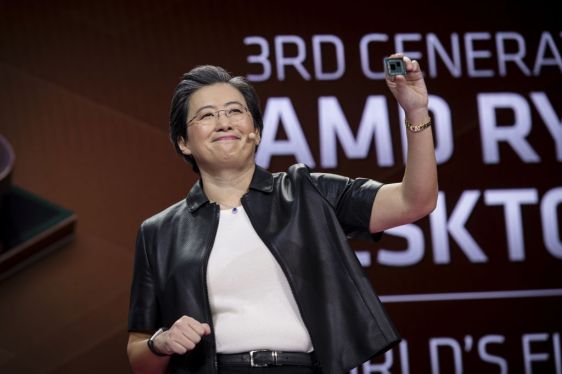OpenAI says its corporate structure must evolve to advance its mission of ensuring artificial general intelligence (AGI) — AI that can complete most tasks humans can — benefits all humanity.
The company currently has a for-profit org controlled by a nonprofit, with a “capped profit” share for investors and employees. But in a blog post published Friday, the company says it plans to begin transitioning its existing for-profit into a Delaware Public Benefit Corporation (PBC), with ordinary shares of stock and the OpenAI mission as its public benefit interest.
Those details had been reported elsewhere. In December, The New York Times revealed that OpenAI was in discussions to pay its nonprofit billions of dollars for it to cede control. However, it’s the first time OpenAI has laid out its proposal in a public memo.
“As we enter 2025, we will have to become more than a lab and a startup — we have to become an enduring company,” OpenAI wrote in its post. “The world is moving to build out a new infrastructure of energy, land use, chips, data centers, data, AI models, and AI systems for the 21st century economy. We seek to evolve in order to take the next step in our mission.”
OpenAI says establishing the PBC would enable it to “balance shareholder interests, stakeholder interests, and a public benefit interest” in its decision-making while allowing it to “raise the necessary capital with conventional terms.” It would also create one of the best-resourced nonprofits in history, OpenAI claims; OpenAI’s existing nonprofit would receive shares in the PBC “at a fair valuation determined by independent financial advisors.”
“We have a nonprofit and a for-profit today, and we will continue to have both,” OpenAI wrote. “Our current structure does not allow the board to directly consider the interests of those who would finance the mission and does not enable the nonprofit to easily do more than control the for-profit. The PBC will run and control OpenAI’s operations and business, while the nonprofit will hire a leadership team and staff to pursue charitable initiatives in sectors such as health care, education, and science.”
OpenAI was founded in 2015 as a nonprofit research lab. But as its experiments became increasingly capital-intensive, it created its current structure, taking on outside investments from VCs and companies, including Microsoft.
In October, OpenAI raised $6.6 billion at a $157 billion valuation, bringing its total raised to $17.9 billion. The company still expects to lose money this year, however — $5 billion, according to CNBC — and the terms of its latest funding round require that it complete a for-profit transition within two years.
The plan faces hurdles.
One of OpenAI’s co-founders, billionaire Elon Musk, has filed for an injunction to halt the company’s transition to a for-profit, accusing OpenAI of abandoning its original philanthropic mission. Musk has also alleged that OpenAI has deprived his own AI company, xAI, of capital by extracting promises from investors not to fund it.
OpenAI has called Musk’s complaints “baseless” and simply a case of sour grapes.
Facebook’s parent company and AI rival, Meta, is also supporting efforts to block OpenAI’s conversion. In December, Meta sent a letter to California attorney general Rob Bonta, arguing that allowing the shift would have “seismic implications for Silicon Valley.”
“If OpenAI’s new business model is valid, nonprofit investors would get the same for-profit upside as those who invest the conventional way in for-profit companies while also benefiting from tax write-offs bestowed by the government,” Meta wrote in the letter.
OpenAI competitors like xAI and Anthropic are structured as PBCs but lack a nonprofit component.
OpenAI’s structure as it exists today is what ultimately led to the abrupt ousting of CEO Sam Altman last November, which greatly displeased investors — in particular Microsoft. It also gives OpenAI’s board the power to determine exactly when OpenAI has achieved AGI, and exempts this AGI from the licensing agreements the startup has in place with customers.
One of those customers is Microsoft — and Microsoft and OpenAI are said to have a specific, internal financial definition of AGI. According to The Information, the two companies signed an agreement last year stating OpenAI has only achieved AGI when it develops AI systems that can generate at least $100 billion in profits.
OpenAI continues to deal with an outflow of high-level talent due in part to concerns that the company is prioritizing commercial products at the expense of safety. One former employee, Carroll Wainwright, who researched aligning AI systems with safety policies, wrote in a post on X this fall that OpenAI “was structured as a nonprofit [but] acted like a for-profit” and “should not [be trusted] when it promises to do the right thing later.”
In a series of posts on X, Miles Brundage, a longtime policy researcher who left OpenAI in October, said that he has “serious concerns” about OpenAI’s transition plan as outlined.
“First, there is surprisingly little discussion of actual governance details, despite this arguably being the key issue,” Brundage wrote. “Second, a well-capitalized nonprofit on the side is no substitute for PBC product decisions … being aligned to the original nonprofit’s mission … Third, while there is a ton of potential for a well-capitalized nonprofit to drive ‘charitable initiatives in sectors such as health care, education, and science,’ that is a very narrow scope relative to the original OpenAI mission. What about advancing safety and good policy?”
Brundage said that he worries about OpenAI’s nonprofit becoming a “side thing” that gives license to the PBC to operate as a “normal company” without addressing potentially problematic areas.
“Besides board details, what other guardrails are being put in place … to ensure that the nonprofit’s existence doesn’t (seem to) let the PBC off too easy?” he wrote. “[A]s OpenAI knows (in part from work I coauthored there), competition also begets corner-cutting. What are the PBC and nonprofit going to do about this?”
TechCrunch has an AI-focused newsletter! Sign up here to get it in your inbox every Wednesday.







